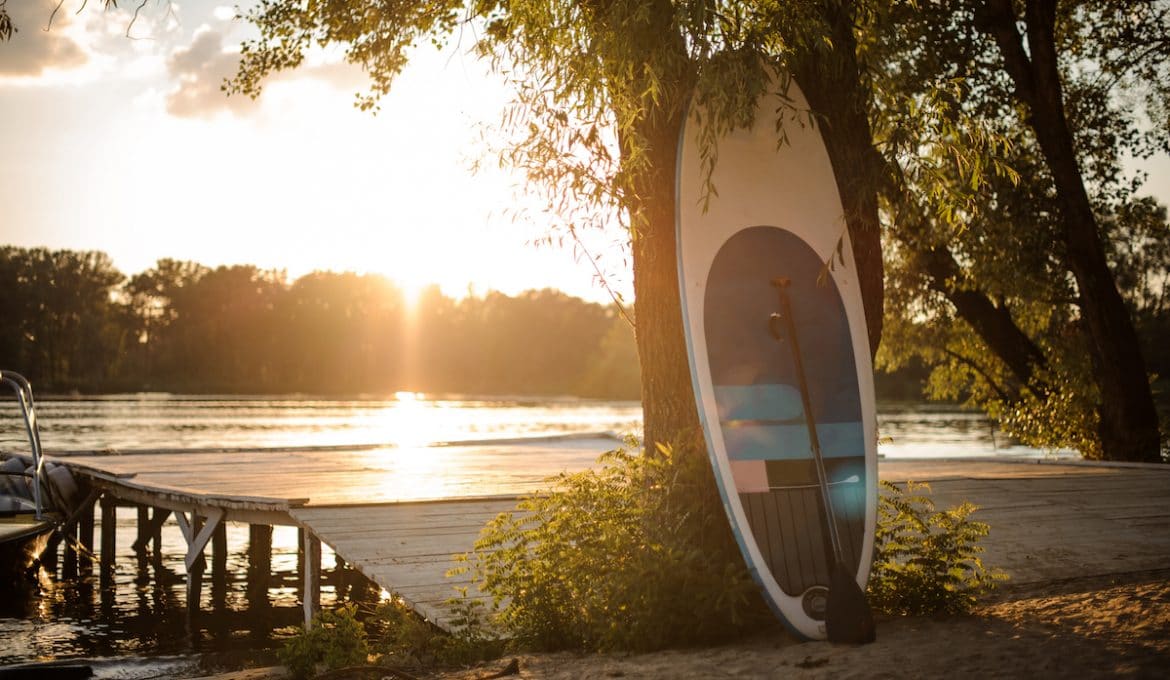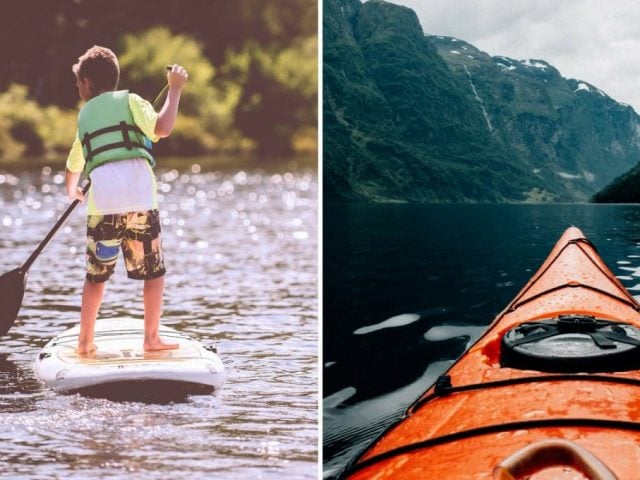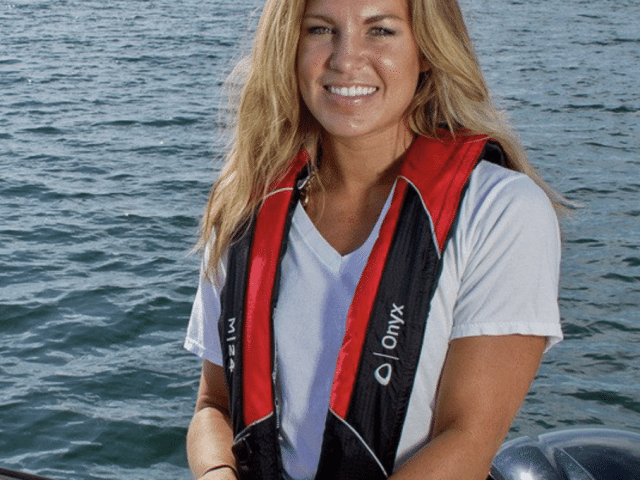Many of the nicest RV resorts are located within a short distance of a body of water. In the warmer and less windy months, these waters offer great opportunities for stand-up paddleboarding (SUP).
Getting out on a SUP in the early morning hours provides time for reflection and also opportunities to spot local birds and other wildlife. But SUPs aren’t always the easiest thing to transport, especially when you’re in your RV.
To help you prepare for your next RV trip to an incredible location with waters just begging to be paddled, check out the following tricks that will help you bring your SUPs on an RV vacation.
Transportation Tricks—From Home to RV Park

Securing SUPs to your RV can be a challenge. They are generally more fragile than kayaks and many are longer as well. Therefore, they present a greater risk of clipping an overpass or low bridge if they’re sticking too high up from the rear of your RV.
It’s also very difficult and inconvenient to strap SUPs down to the roof of your RV and then have to climb back up to lower them down once you arrive at your destination.
Fortunately, there are many tow-behind kayak trailers that also function perfectly well to transport your SUPs. These work well if your SUPs are too long to transport vertically in a hitch-mounted rack.
In the worst case scenario, you can always take the fins off your SUPs and maneuver them inside your RV for transport (depending on its dimensions). This at least gives you a way to get them to your destination and then you can go from there. Another option is to consider an inflatable SUP, which can fold down and use up a relatively small space.
Transportation Tricks—From RV to Water’s Edge

Once you get to the site where you’ll be using your SUPs, it’s time to get them off your RV and down to the water. It might sound obvious, but be careful to bend your knees, lift with your legs, and keep your back straight when lifting a SUP board.
Lifting with your back is one of the easiest ways to injure yourself and, subsequently, compromise your ability to enjoy your SUP vacation.
If you find yourself in a situation where your campground is a considerable distance from the water’s edge, a SUP cart will really come in handy. These will help you easily roll your board down to the water and also decrease the risk of dropping your board if a significant wind gust comes up.
When it comes to your paddle and personal flotation device (PFD), you can always secure them directly to your board using bungees when in transit. This will free up both hands to safely transport the board itself to the water.
Storage and Damage Control Tricks

Most damage to SUPs actually occurs when they’re not in use on the water. They are made to be in the water and, as such, using them there rarely results in damage.
However, rocks, concrete, and other hard surfaces are much less forgiving, especially to hollow SUPs that are designed to be extremely lightweight and portable (like the kind you might want when traveling in an RV).
Because an RV vacation will involve quite a bit of moving your board around, you’ll benefit from buying a board bag to store and protect SUPs when you aren’t using them. This is the best way to store your SUPs safely and minimize the risk of damaging them.
Avoiding a “Lost SUP” Situation

Many SUP owners overlook the importance and benefits of a SUP leash. It might not look cool, and it might feel slightly uncomfortable on your ankle, but staying attached to your board comes in handy, especially in windy conditions.
Let’s face it, even extremely experienced stand-up paddlers fall off their boards once in a while. When the wind picks up, the likelihood of falling off your board only increases. A SUP leash or tether will keep your board close so that you can climb back on.
A proper SUP leash will help you keep your board and yourself safe. That way, you can turn right around and start planning your next RV vacation.
Despite roots that many believe date back thousands of years, the popularity of SUPs has only really begun to skyrocket over the last couple of decades. It’s time to get out there and enjoy your own adventure. Why and where do you want to SUP? Leave a comment below.





